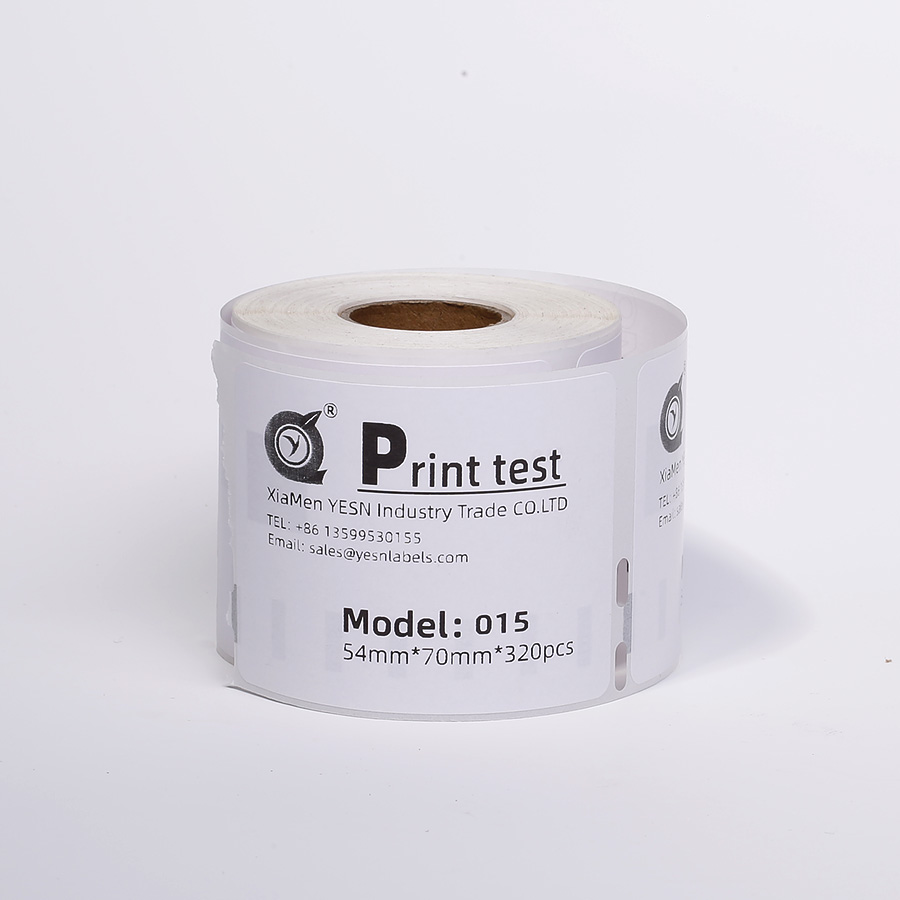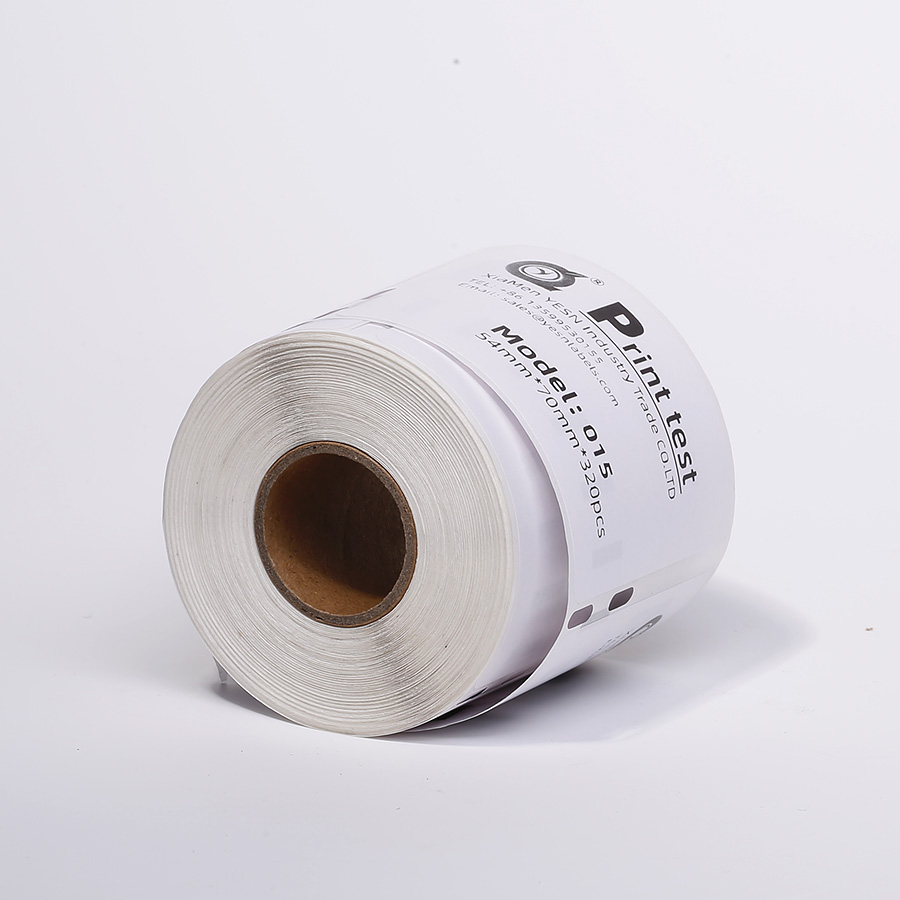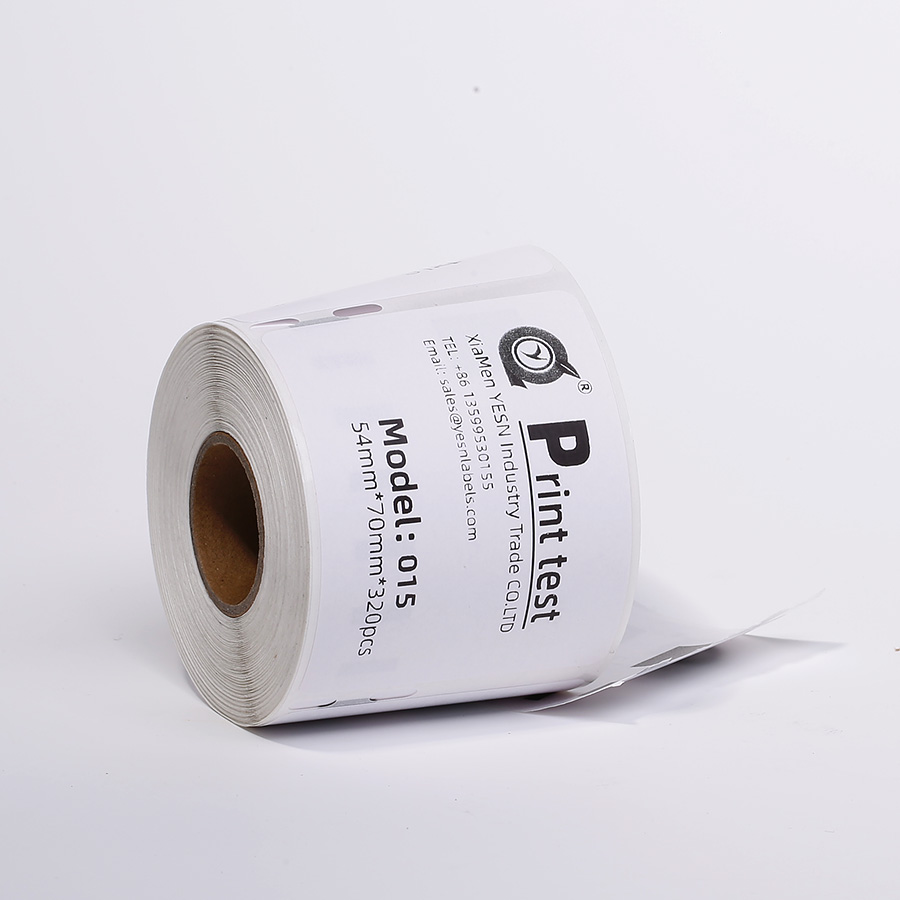What Is a Thermal Label?
A thermal label is a type of label designed for use with thermal printers.
These labels are coated with a heat-sensitive material that changes color when exposed to heat,
allowing images, text, and barcodes to be printed without the need for ink or toner.
Thermal labels are commonly used in industries such as logistics, manufacturing,
and retail for applications like shipping labels, product labels, and inventory management.

How Do I Know If My Labels Are Thermal?
To determine if your labels are thermal, you can perform a few simple tests:
1.Heat Test:
.Gently rub the label with a coin or a pencil eraser. If the area where you rubbed turns black, it is likely a thermal label.
.Alternatively, you can hold the label near a warm surface (like a light bulb) for a few seconds.
Thermal labels will show a darkened area where they were heated.
2.Visual Inspection:
.Look at the label under a magnifying glass.
Thermal labels often have a smooth, uniform coating that is slightly glossy or matte.
.Regular labels, on the other hand, may have a more textured surface and may show the fibers of the paper.
3.Package Information:
Check the packaging or documentation that came with the labels.
Manufacturers usually specify whether the labels are thermal or not.

What Is the Difference Between Thermal Labels and Regular Labels?
1.Printing Method:
.Thermal Labels: Printed using thermal printers, which use heat to create images and text directly on the label surface.
.Regular Labels: Printed using inkjet or laser printers, which apply ink or toner to the label surface.
2.Material:
.Thermal Labels: Coated with a heat-sensitive material that changes color when heated.
.Regular Labels: Made of standard paper or synthetic materials and require ink or toner for printing.
3.Durability:
.Thermal Labels: Generally more durable and resistant to water, chemicals, and UV light, making them suitable for outdoor and harsh environments.
.Regular Labels: Less durable and may fade or smudge over time, especially when exposed to moisture or sunlight.
4.Cost:
.Thermal Labels: Often more expensive per unit but can be more cost-effective in the long run due to the absence of ink or toner costs.
.Regular Labels: Generally less expensive per unit but require ongoing costs for ink or toner.
5.Application:
.Thermal Labels: Ideal for high-volume, industrial, and outdoor applications.
.Regular Labels: Suitable for general office use, home projects, and low-volume applications.

What Are the Cons of Thermal Labels?
While thermal labels offer many advantages, they also have some drawbacks:
.Image Fading:
Thermal labels can fade over time, especially when exposed to heat, direct sunlight, or certain chemicals.
This can make the printed information difficult to read.
.Limited Color Options:
Most thermal labels are limited to black and white.
While some advanced thermal printers can produce color, the range and quality are generally not as good as those of inkjet or laser printers.
.Sensitivity to Heat:
Thermal labels are sensitive to heat, which can cause the printed image to darken or become illegible.
This can be a problem in high-temperature environments.
.Higher Initial Cost:
Thermal labels and thermal printers can be more expensive to purchase initially compared to regular labels and inkjet or laser printers.
.Specialized Equipment:
You need a thermal printer to use thermal labels, which may not be readily available in all settings.
This can limit the flexibility of using thermal labels in certain environments.
By understanding the characteristics and limitations of thermal labels,
you can make an informed decision about whether they are the right choice for your labeling needs.
 +86 13306035080
+86 13306035080 Skype: labelpaper
Skype: labelpaper WhatsAPP: +86 13599530155
WhatsAPP: +86 13599530155 order@yesnlabels.com | sales@yesnlabels.com
order@yesnlabels.com | sales@yesnlabels.com


 No.8-1 JiuZhanLinLi HeShan XinMin Town TongAn District XiaMen 361100 China
No.8-1 JiuZhanLinLi HeShan XinMin Town TongAn District XiaMen 361100 China Phone+86 13306035080
Phone+86 13306035080 AddressNo.8-1 JiuZhanLinLi HeShan XinMin Town TongAn District XiaMen 361100 China
AddressNo.8-1 JiuZhanLinLi HeShan XinMin Town TongAn District XiaMen 361100 China E-amil
E-amil

